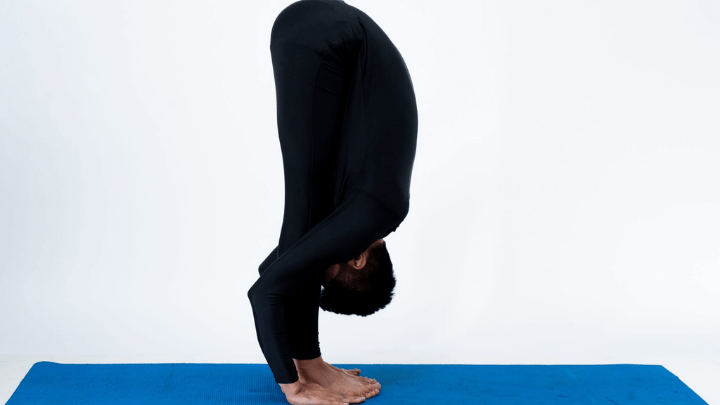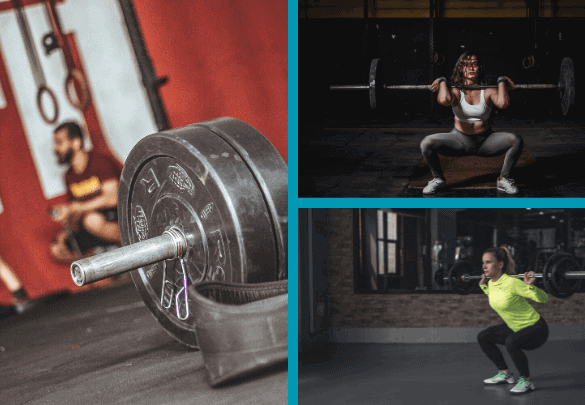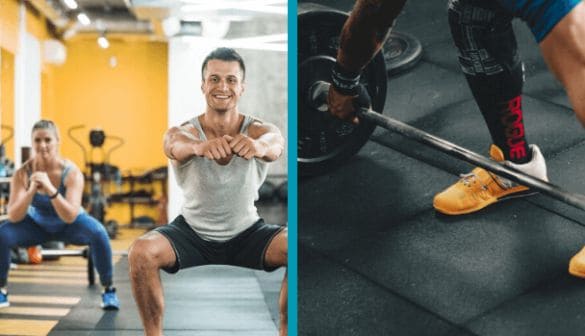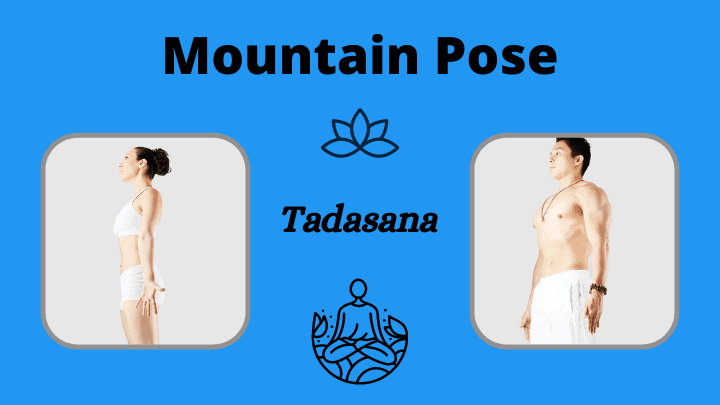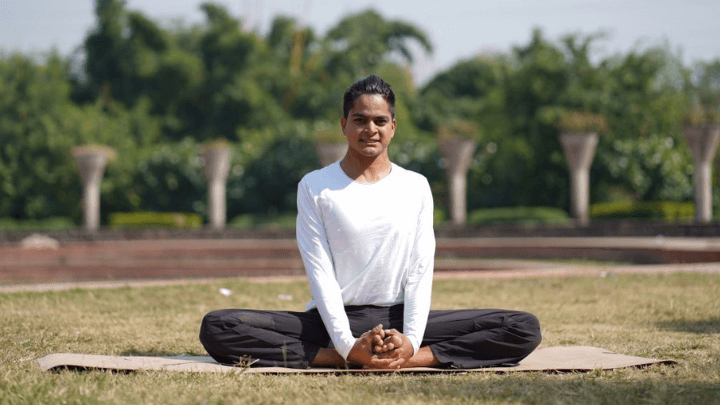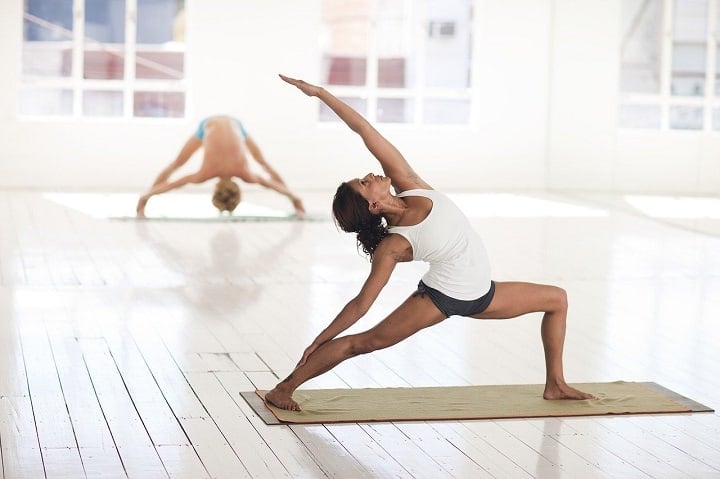This is the most complete guide to Standing Forward Bend (Uttanasana) online.
If you want to:
- See video/text-based examples of how to do Uttanasana
- Get access to the most frequently asked questions about Standing Forward Bend
- Find examples of how to move from Standing Forward Bend to other poses
Then you’ll love the detailed insights in today’s guide.
Let’s get started:
What is Standing Forward Bend?
Also known as Uttanasana (derived from the Sanskrit words ut, which means “intense,” and the verb tan, meaning to “stretch” or “lengthen” and Asana – “seat” or “posture”); Standing Forward Bend is a well-loved pose that stretches your entire backside, especially the backs of your thighs (hamstrings).
Intense? Well… it can be. But don’t be intimidated!
You can always modify this pose to make it more gentle and comfortable for your body! In this guide, we will show you how, so keep reading….
Uttanasana stretches your entire backside from the soles of your feet, the backs of your legs; your lower, middle, and upper back; and neck.
Standing Forward Bend is also called “Standing Forward Fold” because in this pose, you literally “fold” forward.
In this pose you create a deep fold in your body — essentially, an acute angle (if you remember from geometry)… Every angle has a pivot point, a fulcrum. In Standing Forward Bend, you pivot from your hip joints, not your waistband.
I have been a certified yoga teacher for over 20 years. When I teach Uttanasana, I always emphasize the importance of pivoting at the hips … not the waist. Why?
Moving from the hips in this pose provides more stability and less strain on your lower back.
A key element to doing this pose correctly is to have a long spine going in and coming out of the pose. Just like you’d do in Seated Forward Bend, lead with your heart as you bend forward.
This means that you are actively lengthening your spine and opening your chest as you fold your torso over your legs — kind of like a tightly squeezed sandwich.
The best part?
You don’t have to be able to bend yourself into a pretzel to do this pose. You don’t have to be able to touch your toes when you bend forward.
You don’t even have to be flexible in order to receive the benefits.
Why?
You can modify this pose in several different ways and still get all the amazing benefits of Uttanasana.
Now I’ll show you how to master this yoga posture, along with some interesting variations that are definitely worth a try!
How to Do Standing Forward Bend (Uttanasana)
Disclaimer: Whilst Uttanasana is suitable for most people, if you are suffering from lower back injury, are pregnant, or not used to physical activity; always consult your doctor before making a change in your lifestyle.
1. Stand up straight in an upright position with your feet together.
2. Place your hands on your hips and bend at the hip joints (not the waistband).
Tip: Avoid rounding in your upper or lower back, as this causes your shoulders to round forward and chest to collapse
3. Lengthen your front torso to keep the length in your spine as you fold forward:
Tip: Think of your body as the front and back covers of a book in this pose. Your hip joints are like the “spine” of the book where it opens and closes.
The front of your body is like the front cover, and vice versa. When you fold forward, you are closing the book. But that doesn’t mean that the front cover gets bent: Instead, it stays straight.
4. Press your shoulders down away from your ears as you reach your hands down along your shin bones. Don’t force it. If you can, reach with your fingertips or palms to either side of your feet.
Tip: Don’t worry if you can’t touch your toes, you can still get all the benefits of this pose with this easy modification: Place two yoga bricks on either side of your feet and press your palms down flat on top of each brick.
5. Whilst maintaining an open chest and a long spine, actively press the crown of your head toward your toes and your forehead toward your shins.
6. Breathe deeply. If you feel slight discomfort, try to stay with the pose for at least 5 breaths. If you feel pain, ease out of the pose and take a rest before trying it again.
Standing Forward Bend Modifications for Different Body Types
Note: If you’re experiencing a sharp pain in any area of your body during this pose, stop immediately and seek advice from a medical professional.
- If you feel discomfort in your lower back: Create what I call a “micro-bend” in your knees (bend your knees slightly). If this doesn’t seem to help, then bend your knees as much as you need to make your back feel comfortable.
- If you feel tight in your hamstrings or calf muscles: Use a yoga strap wrapped around your feet. If you don’t have a strap, don’t worry! Just use a belt, a long piece of fabric … or your kid’s jump rope (the idea is to improvise!)
Loop the strap or belt under the soles of your feet and gently pull to deepen the stretch. Avoid overstretching.
- If you feel under-stretched in your hamstrings and wish to deepen the pose: This means you probably have flexible hamstrings! … Press your palms down to the floor. Then invert your hands so that your fingers are facing behind you.
Walk your hands along the floor behind your feet. Keep pressing your palms to the floor.
Also, press your forehead more actively into your shin bones at the same time. This should deepen the feeling of stretch in your back and hamstrings.
Another option to deepen Uttanasana is to insert a thick book or folded blanket under your toes and come into the pose as described above.
- If you are pregnant: You want to make room for your growing belly by avoiding over-compression in your abdominal area and over-stretching the ligaments.
Place a pillow under your belly and stretch your chest over the pillow whilst separating your feet. Stretch gently and don’t force it.
How Long Should You Hold Standing Forward Bend For?
Hold Standing Forward Bend for 30 seconds to 1 minute (at least 5 slow, deep breaths), then relax for 40-60 seconds.
How Often Can You Do Uttanasana?
If you have been practicing yoga for a while, you may be familiar with the classic “Sun Salutation (Surya Namaskar)” sequence. In this series of yoga poses designed to warm up all the muscles in your body, Standing Forward Bend is done repeatedly (up to 10 times, depending on the style of your yoga class).
Uttanasana is a great overall stretch for your backside: upper back, lower back, backs of your legs, right down to your Achilles tendons…. so, it’s a pose that you can repeat as many times as feels comfortable for you.
However, if you feel dizziness, pain or discomfort, especially in your lower back, I would recommend you try a modification of the pose (as described above) or refrain from doing more Forward Bends in your routine for that day.
Standing Forward Bend Variations
Half Standing Forward Bend
1. Begin in Standing Forward Bend (as described above).
2. Press your palms or fingertips into the floor (or onto your yoga bricks) beside your feet.
3. Inhale your arms into “airplane mode” by straightening them out beside you parallel to the floor.
4. Make your backside be like a “tabletop”: Lengthen your spine by creating a long line from the crown of your head to your tailbone.
5. Lift your belly button (navel) in and up towards your spine to activate your core abdominal muscles as you keep your arms out like airplane wings.
Tip: If “airplane wing” arms feels like too much strain in your lower back, you can modify this pose by instead pressing your palms against your thighs whilst keeping your spine long and straight.
6. Keep your gaze down towards the floor directly below your nose. This will help you avoid straining your neck or compressing cervical vertebrae.
7. Hold this position for at least 5 breaths.
8. Exhale and release your torso into full Uttanasana (as described above).
How to Transition From Extended Mountain to Standing Forward Bend
1. Start in Mountain Pose (Tadasana) by standing up straight with your feet together.
2. Engage your thigh muscles by lifting your kneecaps up.
3. Lift your inner ankles and spiral your upper thigh bones inward.
4. Activate your buttock muscles slightly.
5. Open your heart by broadening your collarbones and tucking your tailbone in between your legs to create a pelvic tilt.
6. Engage your abdominal muscles (but not a “vice grip”).
7. Inhale and straighten your arms up overhead, bringing your palms together overhead.
8. Lift your gaze up to your thumbs and actively stretch your arms upward as you press your palms firmly together — this is known as “Extended Mountain Pose” (Urdhva Tadasana) or “Palm Tree Pose” (Talasana)
9. Hold Extended Mountain Pose for at least 5 full, deep breaths.
10. With an exhale, bring your arms down in a “flying airplane” motion to your sides as you lower your torso down into Standing Forward Bend with a long spine.
How to Transition From Standing Forward Bend to Extended Mountain
Reverse the steps described above. Repeat this sequence up to 5 times if you are a beginner.
If you are an advanced student, you can repeat the sequence of Extended Mountain (Urdhva Tadasana) to Standing Forward Bend (Uttanasana) as many times as you’d like… actually, you could make this your entire yoga session, as repeating this sequence will become increasingly challenging
What Are the Benefits of Standing Forward Bend (Uttanasana)?
Standing Forward Bend is an ideal pose to help stretch your hamstrings. The best part? It also calms your mind.
This is because Uttanasana is a forward fold where your head is lower than your heart. When you are in this pose, the blood circulates more efficiently to your brain, nourishing its cells and refreshing your mind.
Also, your heart can relax in Uttanasana because it doesn’t have to pump quite as much when you are folded forward, thereby achieving an overall calming effect in your body.
Standing Forward Bend deeply stretches your entire back and naturally stimulates your liver and kidneys. As with all forward folding poses in yoga, Uttanasana also stimulates your intestines by creating compression in your abdominal area and can improve digestion.
Standing Forward Bend helps:
- Alleviate migraines[1]
- Relieve stress and anxiety
- Strengthen your thigh and knee muscles[2]
- Weight loss[3]
- Enhance respiratory and cardiovascular function[2]
- Improve sleep patterns[2]
Who Should Not Do Standing Forward Bend?
Standing Forward Bend is contraindicated[4] if you have a back injury, history of sciatica (inflammation in your sciatic nerve), or a disc-related condition in your vertebral column.
The great news is that you can still practice Uttanasana and get all the benefits described above, especially if you are willing to try one of the modifications highlighted above.
If you have a slipped disc, it’s best to avoid Standing Forward Bend, as this pose creates pressure in your lower back[5].
If you have a history of glaucoma or a detached retina, avoid Forward Bends (or any other pose where your head is inverted below your heart), because it creates increased blood flow to your eyes and can exacerbate this condition[6].
This pose is also contraindicated if you have a hamstring tear, since it deeply stretches your hamstring muscles which would instead need rest and gentle stretches[7].
Women who are pregnant can do Standing Forward Bend with modification: Try separating your feet, placing a pillow under your belly, and gently folding your torso over the pillow with your spine long.
I always tell my yoga students, “You know your body better than anyone else,” and “Honor your body.”
If anything hurts in a yoga class, it’s important to listen to your body because you don’t want to risk getting injured and there are usually ways to modify yoga poses. I’ll be happy to help you adapt your practice to your individual needs. Feel free to write to me in the comment section.
What Muscles Does Standing Forward Bend Work?
Uttanasana is a classic pose for stretching the backs of your thighs – also known as your “hamstrings” (I think of them sort of like guitar strings), a group of three long muscles[8] attached to the outside of your knees that extend up to the “sit bones” of your pelvis.
The “sit” or “sitting” bones are literally the bony protuberances at the base of your pelvis that you sit on[9]. In yoga class you may hear your teacher instruct you to “lift your sit bones” up to the sky in Standing Forward Bend: This action helps to extend and lengthen your hamstring muscles.
In addition to your hamstrings, Standing Forward Bend stretches your lower back, neck, calf muscles, hip joints, gluteals (buttock muscles), calf muscles, and Achilles tendons.
Conclusion
Standing Forward Bend, like all forward folds, has a soothing effect. Uttanasana is a great pose to stretch the backside of your body, especially those tight hamstrings.
Uttanasana is a great stretch to insert into your yoga routine, because it lends itself to transitioning from one pose to the next, as in the well-known “Sun Salutation” (Surya Namaskar) sequence.
Like all yoga postures, you can modify this pose with the help of an instructor so it is comfortable for you – and you’ll still receive all the great benefits.
Now I’d like to leave you with one last thought:
When children play, they are naturally flexible and agile, demonstrating a high degree of mobility, from jumping to catching balls to running.
If you are an adult who has lost some of that natural flexibility, you may have wondered, “Whatever happened to the flexibility I used to have when I was a kid?…”
Research[10] shows that whilst flexibility naturally decreases with age due to physiological and biochemical changes, older adults can actually gain greater range of motion and flexibility through a consistent exercise program that includes stretching – like yoga!
If you practice Uttanasana consistently—no matter what your age—then you’ll be bending forward to tie your shoes with as much agility as you did when you were a young child … and won’t that be simply delightful!
I want to hear about you:
What do you like the most about Standing Forward Bend?
When are you going to try it?
Please share your experience with Uttanasana
What Next?
Why not check out some more Yoga poses that can help improve your flexibility and strength for specific sports like Badminton – Yoga For Badminton Players
Let me know by leaving a comment below and remember to follow us on Instagram for more great content.

